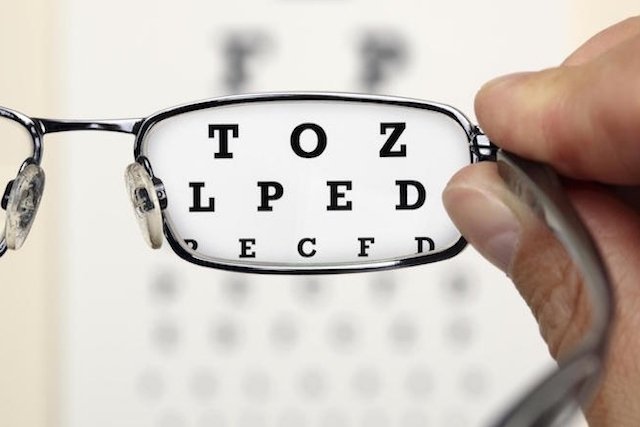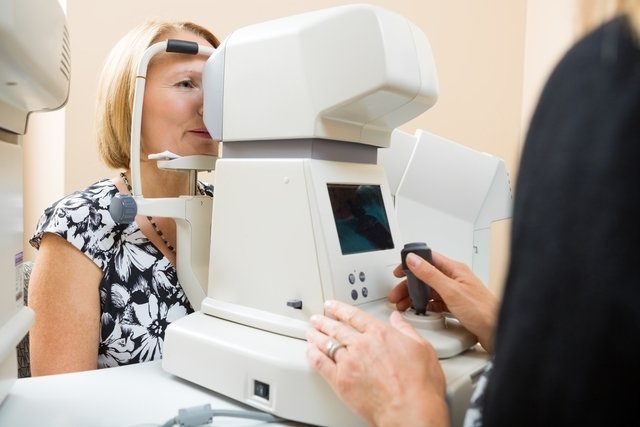The high concentrations of circulating glucose in the blood common in untreated diabetes can lead to the development of changes in vision, which can be initially noticed through the appearance of some signs and symptoms such as blurred and unfocused vision and pain in the eye.
As glucose levels increase, changes in vision may progress, leading to the development of diseases that require more specific treatment, such as glaucoma and cataracts, for example. Furthermore, there is also a risk of people with decompensated diabetes developing irreversible blindness.
Therefore, to avoid vision complications that can occur in diabetes, it is important that diabetes treatment is carried out in accordance with the endocrinologist’s recommendations and that glucose levels are monitored regularly. This way it is possible to prevent not only vision changes, but other complications related to diabetes. See what the most common complications of diabetes are.

The main eye complications caused by diabetes are:
1. Edema macular
Macular edema corresponds to the accumulation of fluid in the macula, which corresponds to the central area of the retina that is responsible for vision. This change, among other causes, can occur as a consequence of untreated diabetes and lead to a decrease in visual capacity.
How is the treatment: Treatment for macular edema is done with the use of eye drops recommended by the ophthalmologist, and laser photocoagulation may be indicated in some cases.
2. Diabetic retinopathy
Diabetic retinopathy is characterized by the development of progressive lesions in the retina and blood vessels present in the eye, which can cause difficulty seeing and blurred vision. These lesions are formed as there is an increase in circulating glucose levels and, therefore, in cases of diabetes, hemorrhage, retinal detachment and blindness are possible.
How is the treatment: Diabetic retinopathy can be treated by performing argon laser photocoagulation and vitrectomy. However, the best way to combat diabetic retinopathy is through diabetes treatment.
Learn more about diabetic retinopathy.
3. Glaucoma
Glaucoma is an eye condition that occurs due to increased pressure inside the eye, which can damage the optic nerve and lead to loss of vision as the disease develops.
How is the treatment: Treatment for glaucoma must involve daily use of eye drops to lower pressure in the eye, however the ophthalmologist may recommend, in some cases, laser surgery.
4. Cataract
Cataracts are also an eye disease that can occur as a result of diabetes and occur due to damage to the eye’s crystalline lens, which makes vision blurred and can lead to progressive vision loss.
How is the treatment: Treatment for cataracts must be recommended by an ophthalmologist, and surgery is usually recommended to remove the lens from the eye and replace it with an ocular lens that reduces vision changes. See what cataract surgery is like.
5. Blindness
Blindness can happen when a person has uncontrolled diabetes and when the changes in vision presented by the person are not investigated. Thus, there may be progressive eye injuries that can result in permanent loss of vision, with no treatment to reverse the condition.

What to do if you suspect visual changes
If a person notices throughout the day that they have some difficulty reading, feel pain in their eyes or if they feel dizzy at certain times of the day, it is important to take a blood glucose measurement to check the levels of glucose circulating in the blood, The most appropriate treatment to maintain normal blood glucose levels is then determined.
Furthermore, it is advisable to consult an ophthalmologist so that all necessary tests can be carried out to identify any eye complications early. The best way to deal with this situation is to find out what you have and start appropriate treatment because the complications of diabetes in the eyes can be irreversible and blindness is a possibility.

Sign up for our newsletter and stay up to date with exclusive news
that can transform your routine!
Warning: Undefined array key "title" in /home/storelat/public_html/wp-content/plugins/link-whisper-premium/templates/frontend/related-posts.php on line 12
Warning: Undefined array key "title_tag" in /home/storelat/public_html/wp-content/plugins/link-whisper-premium/templates/frontend/related-posts.php on line 13



